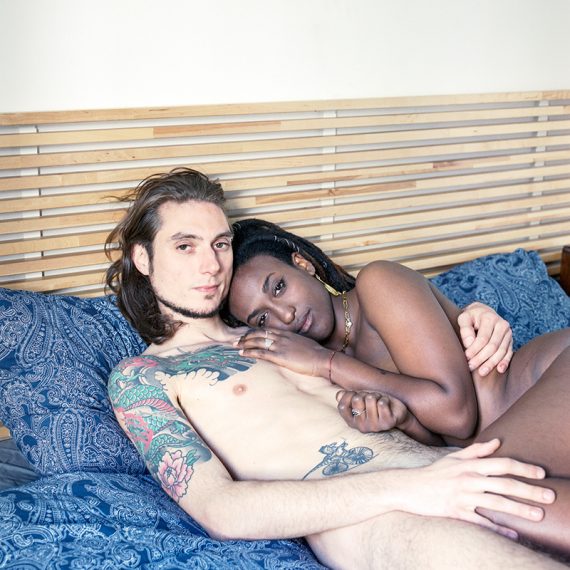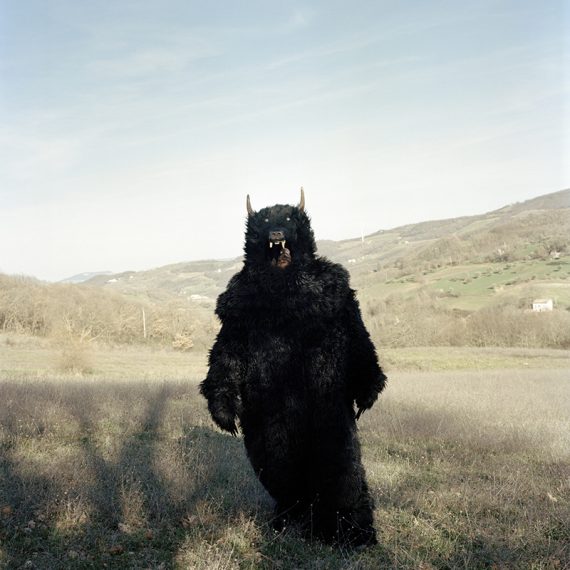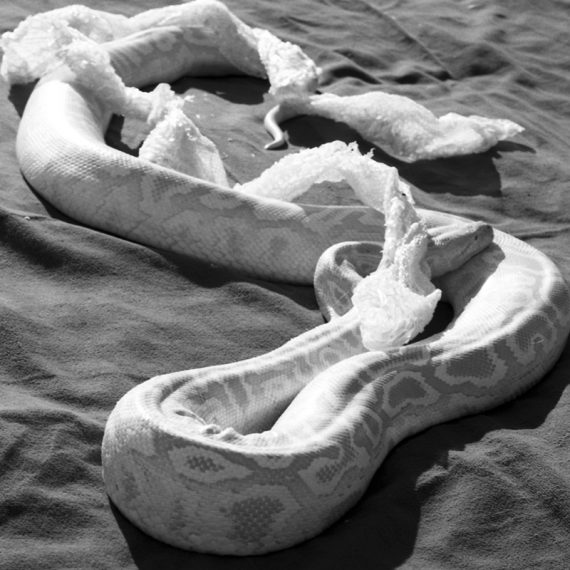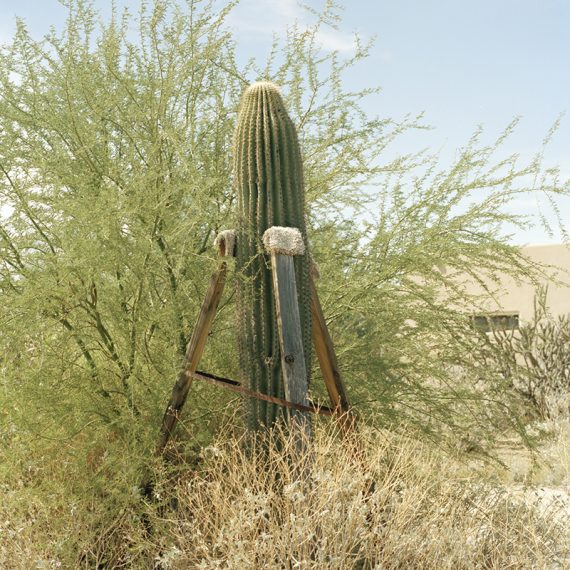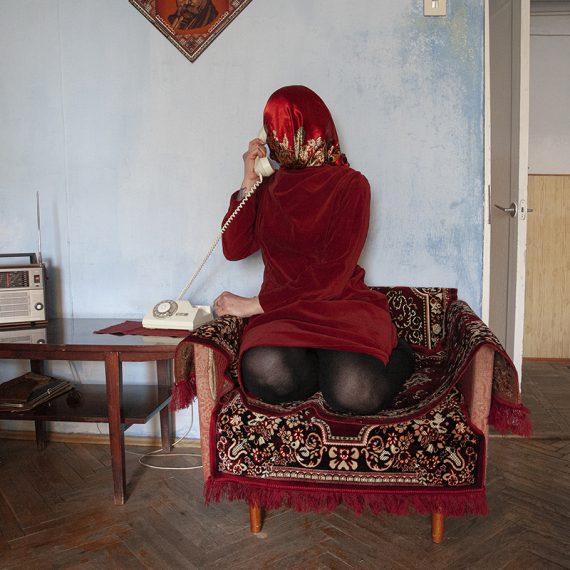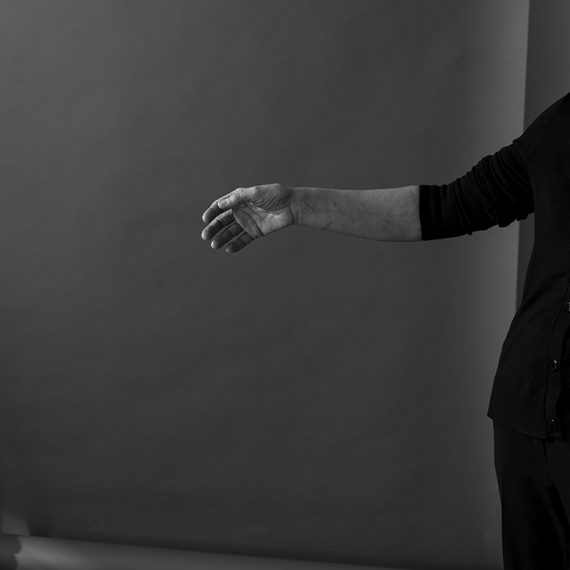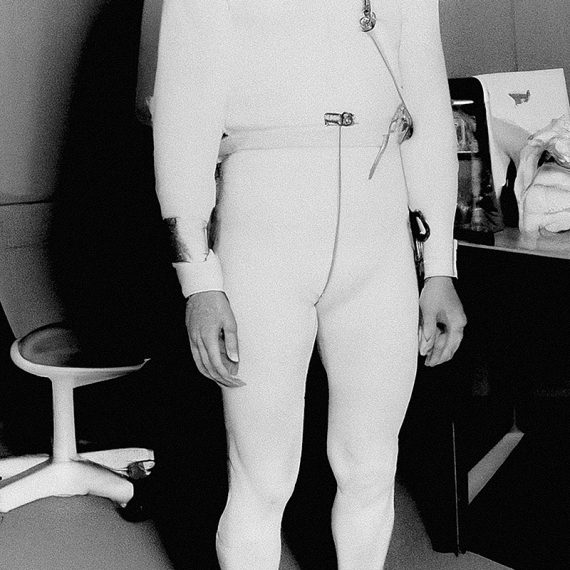Eleonora Agostini. A Study on Waitressing
A Study on Waitressing looks at the phenomena of self-representation, by questioning the fictionalised image of the waitressing woman through the study of the stage, the backstage and the performative.
The relationship between image and performativity is investigated through the image of my mother, her postures, movements, and behaviours during her job as a waitress. Her figure is used as a vehicle to address concerns on the visible and the hidden in relation to private and public behaviours, with a particular attention to the social roles we play in our every-day when we interact with our public.
The work is deeply rooted in the psychological and sociological interests of the work of Erving Goffman and his writing on the theatricality of the everyday and on the function of the body in the interpretation of social roles.
The restaurant becomes the space where the body acts as a connector between the observer and the observed.
A Study on Waitressing presents itself as a collection of photographs, collages, texts, archival images and videos that explore the different layers and meanings of existing within a social situation, engaging in face-to-face interactions, and playing a character that moves between individuality and social structures and exists between the real and the staged.”
Andrea Camiolo. The Manhattan Project
The Manhattan Project collects photographs of various experiments related to the use of nuclear explosives conducted in the 1940s. The negatives were found in an abandoned U.S. military base in Sicily. Due to time, the images have suffered considerable deterioration that produces an overabundance of grain and less sharpness.”
This could be a perfect incipit to deceive the viewer, a story that makes sense of photographs that make no sense. In fact, these are not even photographs; they are photo-realistic images produced by A.I.
Starting with descriptions and scans of photographs in the book Evidence (1977) by Larry Sultan and Mike Mandel an A.I. generated new images that I later manipulated to make a series of fake pictures.
What are we standing in front of? To whom do these images belong? To the photographers who physically took the pictures in the 1940s? To Larry Sultan and Mike Mandel who selected them from hundreds of thousands by digging deep into U.S. federal archives in the 1970s? To those who took the 12 billion photographs through which this A.I. generated these images? To me who clicked the “generate button” with a computer mouse?
In a short circuit of belonging, these images ask many questions without providing answers. The vision of an explosion and images related to it is what we are left with.
Non-real images that speak about reality and the present, fake archival artifacts that connect perfectly to the present day, days when we are back to talking about world war and nuclear testing.
Sofiya Chotyrbok. Home Before Dark
Home Before Dark stems from a biographical episode of the artist linked to the renunciation of his birth citizenship, Ukrainian, for the acquisition of another, Italian, by adoption. This event gave rise to a layered research focused on the individual and collective definition of the self, at a time when its geographical and temporal foundations are becoming more uncertain. Starting in February 2020, a series of trips to Ukraine have punctuated a creative process of identity rediscovery and belonging to the post-Soviet context, whose boundaries and definitions are now more blurred and complex than ever. The starting point of the artistic process is an archive, a place of memory by definition, here materialised in a chruščëvka (Soviet flat) and in the objects and images it contains, symbolic relics that are both familiar and alienating. It is in the familiar textures of carpets, family photos, among tea cups or in the pages of disused telephone directories that the research is articulated, making visible, without filling them, the gaps of memory through a series of camouflages, erasures and concealments. The images, whose languages combine self-portraiture, staged photography, collage and archive research, dig beneath the symbolic hegemonies that shape collective identities and reveal, without providing a definitive solution, the nostalgia of a past lost in the folds of a secret.
(Text by Rosa Cinelli)
Davide Degano. Romanzo Meticcio
Romanzo Meticcio studies the Italian post-colonial condition as a fundamental element of the contemporary life of the Bel Paese.
In my research, the prefix “post” takes on a progressive historical value. It creates a connection between the present, the colonial past, and the intranational and international migratory waves inviting a critical attitude toward the legacy of the past and a careful analysis of the effects on today’s society. The Italian State, since its unity, has created a narrative based upon the identification of places and people considered marginal. The suburbs, the South, minorities, and second-generation Italians, and the question of fascist ideology that has never been dormant and has never been addressed and resolved in an open public debate. Indeed also placed on the margins. The photographic medium in the 1930s was a fundamental tool to justify colonial policies and to represent certain situations as marginal. Photographs became a performative act of exclusion. If the process of removing colonial history has pervaded Italian culture since the Second World War, Romanzo Meticcio wants to bring this past to light. It creates new imaginaries and cultural scenarios for the future by questioning Italian identity to its core. My research does it by placing at the center what is marginalized, scarcely considered, and conceiving migrants and the following generations of new Italians in ways that go beyond rejection and victimization.”
Carlo Lombardi. La Carne dell’Orso 2019-2022
“That was bear meat. Now, many years have passed, and I regret having eaten so little of it. I think and hope that each of you has gleaned from life what I have. Well, none of these things, not even remotely, has the taste of bear meat: the taste of being strong and free, which means free to make mistakes; the taste of being your own master, which means master of the world.”
(Primo Levi, The Periodic Table, Iron)
The project aims to provide a vision on the fragile relationship between human and nature through an investigation into the ethical, symbolic and anthropological evolution of conservation practices adopted over time to protect the Apennine bears. Juxtaposing contemporary photographs with historical images from the Abruzzo, Lazio and Molise National Park’s archive presented as “evidence” for factual context, the work brings attention to the anthropocentric approach behind the supposed objectivity of conservation efforts – the aesthetic and symbolic identification with animals as well as our longings projected on nature. It’s a reflection on humanity’s role in conservation endeavors and the subjective factors that drive our choices to protect nature and consequentially define it.
Giulia Mangione. The Fall
“I am sitting in the passenger seat of a pick-up truck. Between me and the man driving leans the long barrel of a shotgun. Around us the grass has turned yellow in the dry heat. Scattered in the fields, the bunkers stick their heads out of the ground, their spacious bellies underground. I am alive and you are dead, I think as I drive past the world’s largest survival community.
The place is infested by rattlesnakes. A gated community, but some bunker owners chose to have a barbed wire fence around their property too. Despite the snakes and the isolation, people claim to feel safe here, safer than they felt in their houses in Minnesota, California or Arizona.”
(Journal entry. 4 September 2022. Edgemont, South Dakota)
The Fall is the result of a four-year photographic research project that looks at popular myths surrounding the apocalypse and associated conspiracy theories. It is an exploration of how belonging to a community or a religious cult makes people feel safer and protected from what they fear may happen. From La Palma in the Canary Islands, to the United States and the Greek island of Patmos, where the Book of Revelation was written, I investigate how society is preparing to face potentially catastrophic events.
Chance meetings with strange men looking for their mother’s lost wedding ring in the middle of a desert, survivalists, preppers, religious cults and bunker-dwellers. Each encounter resulted in a series of photographic portraits accompanied by interviews, field recordings and a hand-written journal.
Feeding on the popular genre of the photographic road trip I drive alone into the American West, with fear and awe, down the road of the apocalypse. The Fall builds on my background in journalism and fine art, combining documentary photography and fiction to reflect on society’s collective fears, imagined and real, rational and irrational.
Eleonora Paciullo. Teofanie
The contrada is a small rural hamlet in Locride, once a land on the fringes of society where rites and ceremonies proliferated, giving it an aura of magic. Almost ten years later, trying to heal the wound of my grandparents’ disappearance, I have returned to the contrada to regain possession of its rites and stories, in an attempt to bring to life the ‘re-enchantment’ of the magical place of my childhood.
The project thus began from a need to rediscover and recognise that place where Persephone and the poetess Nosside were celebrated. The Locrian area is a place where religious and pagan rituals, true stories and myths have always taken place. In this context, I decided to use not only photography but also video-performance, in which I re-enact some rites and stories of the place.
The contrada is therefore both the place of manifestations of the sacred for the Greeks and the magical place of my childhood. Hence the title Theophanies.


